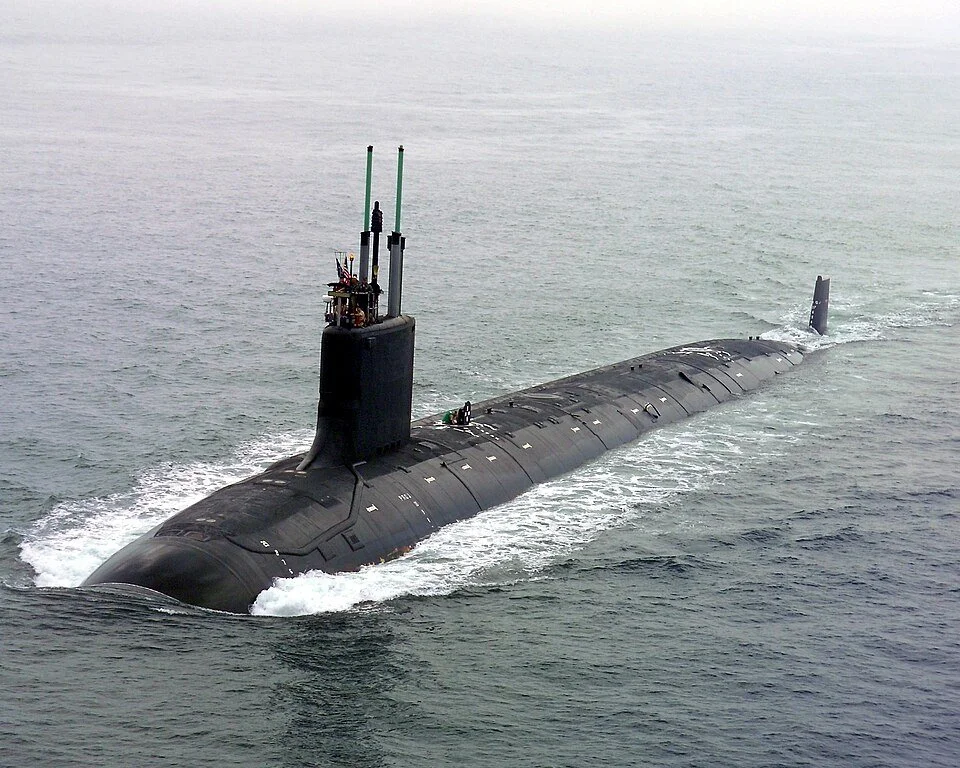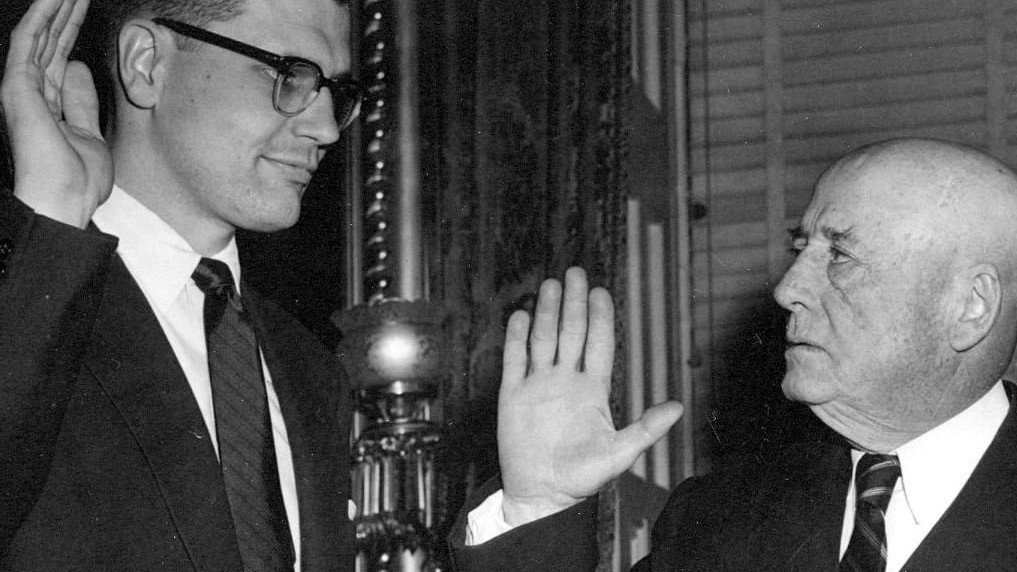The Essentials
This newsletter will focus on those industries providing critical or "essential" services to our country in an effort to demystify their operations, identify the overlaps among such critical infrastructure industries, and how policy makers can better understand and support them.

Changing Change
As framed brilliantly and simply in the classic management book, Who Moved My Cheese?, we humans are all challenged with accepting change to one degree or another. In terms of change across industries, the seminal framework developed by Thomas S. Kuhn back in the early 1960s, “The Structure of Scientific Revolutions,” is spot on. But I’m jumping in too quickly…let me back up and provide some context.

Shut-in
This is just where my mind went – I’m sure there are other things. As CI sectors, I hope we can remember to access these resources. As the federal government, when the shutdown is over, I hope the idea of convening various CI sectors, even those less directly linked, will be a priority, especially as major national security and economic security initiatives are pending (“winning the AI race” for example).

Cancerous
Because of my deep aversion to the healthcare policy arena, my context and knowledge is very limited in terms of the barriers to solving this foundational issue. Therefore, I will only offer some high-level observations related to the healthcare CI sector. However, on the issue of cancer specifically, there is an impact on CI sectors more broadly that I want to note and that could be a reason for, you guessed it, cross-sectoral collaboration.

Aging
Improving our CI infrastructure to function more optimally and flexibly can in some cases be done by upgrading the infrastructure rather than outright replacing it. In the case of classic cars, they cannot be retrofitted to perform like a fully modern vehicle, but in the case of electric distribution grids, for example, a lot can be done to enhance their performance by adding sensors, advanced metering infrastructure, and the like.

Planes, Trains and Automobiles…and Boats, Gondolas, Buses, Trams, Funiculars, Cogwheels and Toboggans
Even as I write this, I sit in a comfortable, well-appointed and massive Airbus A380 owned by Lufthansa, flying across the Atlantic back to the U.S. at over 30,000 feet above sea level and going over 600 miles per hour. Nice way to be transported.

Going Nuclear
Before we jump in, a quick reminder about a few things. The civilian nuclear sector, as defined by the U.S. Department of Homeland Security (DHS), encompasses civilian nuclear infrastructure, including nuclear power reactors, medical isotopes, reprocessing facilities, and the utilization of nuclear materials in specific medical, research, and industrial applications. Nuclear weapons are, thankfully, overseen by the Department of Defense.

Unprecedented Precedent
Now, before I turn to the crux of this edition of the newsletter, let’s pause for a public service announcement: “Warning, the following could be perceived as a lecture. Proceed with caution.” With that out of the way, let’s talk about the growth in projected demand for electricity, which has skyrocketed in the last couple of years.

The Forest and the Trees
In the last edition of this newsletter, I celebrated its two-year anniversary with the ever-relevant forest/trees analogy. I noted that when I think about strategy versus tactics, I like to frame the contrast as the tried and true “forest versus trees” analogy. My perspective is to first think about the forest and then the trees – zooming in and out, depending on the discussion/timeline/thought experiment needed on a particular issue. The fact is that we need both levels of understanding when tackling, well, almost anything. The strategy/forest gives us the “why,” “what” and “when,” while the tactics/trees give us the “how” and the “who.”

The Forest
Got ya! This is not another newsletter about wildfires and our forest health. Instead, in this edition, the second anniversary of this newsletter, which began in May 2023, I am pausing to take a step back and look at our critical infrastructure (CI) sectors from the “forest” level. When I think about strategy versus tactics, I like to frame the contrast as the tried and true “forest versus trees” analogy. My perspective is to first think about the forest and then the trees – zooming in and out, depending on the discussion/timeline/thought experiment needed on a particular issue. The fact is that we need both levels of understanding when tackling, well, almost anything. The strategy/forest gives us the “why,” “what” and “when,” while the tactics/trees give is the “how” and the “who.”

Anti(trust)
As I’ve been attempting to convey in this newsletter over the last couple of years, we need collaboration amongst CI sectors to address major challenges such as cyber- and physical-security, permitting and siting reform, supply chain constraints, etc. Such collaboration should not run afoul of antitrust laws, yet sometimes those laws are cited when gatherings or conversations between CI sectors are contemplated. Invoking antitrust should not prevent or quell such collaborations – rather, antitrust laws and the rules of the road to ensure adherence to such laws should provide structure to these necessary conversations. Managed with effective legal counsel, such collaborations are essential to inspiring trust across CI sectors and solving the challenges we face to provide the affordable, safe, and reliable services that underpin our economy.

Got Milk?
Admittedly, the news is quite varied and intense at the moment, so some of you may have missed the story about avian flu causing an egg shortage, which in turn, logically, has caused egg prices to rise. I wasn’t paying attention to that story so much due to the other things making headlines, but my youngest daughter had heard about it and approached me a few weeks ago about the idea of stockpiling our eggs. This both alerted me to the situation and gave me the opportunity to give my daughter a mini-lecture about the dangers of hoarding (flashbacks to toilet paper + COVID anyone?).

Congressional Staff - the Forgotten Federal Employees
While the nation is focused on the thousands of federal department and agency workforce now, too few people in this country know or care about what happens behind the scenes in Congress, but everyone should understand it. I say that unequivocally having been on the other side for the past 24 years, advocating primarily for the electric sector in front of Congress and several federal agencies. Members of Congress are, by design, more responsive to the needs of their constituents, whether individuals, groups, or companies/businesses. The federal agencies, regardless of who’s in charge, are removed from that pressure, being only indirectly impacted by it via the oversight and funding roles of Congress. The Judicial branch is the most removed, having limited interaction with Congress beyond judicial nominations flowing through the Senate, some oversight, and funding provided by Congress for its operations.

Love
In preparing for the last several editions of this newsletter, my plan for a topic has been waylaid by events. Such is the case today, in the aftermath of the horrific mid-air collision of an American Airlines flight from Wichita with an Army Black Hawk helicopter within view of Reagan National Airport. Like everyone in the D.C.-area who did not have family or friends aboard, I am both relieved and yet heartsick for those who lost loved ones.

History Repeating
During this debate and others related to the LA fires, I hope another point of context beyond historical understanding is also at the forefront. That is the need for extensive resilient infrastructure buildouts in our country. These needed buildouts have been acknowledged on both sides of the aisle via Biden-supported legislation like the Infrastructure Investment and Jobs Act. While the details will be debated, of course, the urgency has become more acute in recent months with ever-increasing forecasts for electricity demand from AI/data center usage and electrification of transportation and buildings. Manufacturing infrastructure in the U.S. is needed to meet this demand, among other needs. In the case of additional electric infrastructure in forested areas, there can be risks, which are increasingly being managed, for example, via early warning signals from technology deployments to detect fire before it impacts the infrastructure. This innovative technology could potentially be used to help land managers, fire agencies, and others to gather data and extend their situational awareness. Language in the Fix Our Forests Act could spur some of this collaboration.

Risk and Rewards
On November 13, this newsletter and my consulting firm hosted a conversation about the risks and rewards of innovation in critical infrastructure (CI) sectors. We’ve all heard about cost-benefit analysis -- while the terms “risk and reward” are similar, in my mind at least, the latter combination enables a broader view, beyond financial costs and benefits, which the former often implies.

The New Veterans
Since 9/11, and with the advent of the now pervasive cybersecurity threat to mostly privately owned CI, the lines have blurred between what’s in the military’s purview versus what’s handled by these CI owners and operators. Of course, the DIB (that it, the network of organizations, facilities, and resources that provides the government with defense-related materials, products, and services) has been deeply interwoven with the military since the 1950s, but, with a few exceptions, the rest of CI has been mostly at arms’ length until these last 20 years. As with almost everything, this evolving relationship has both challenges and opportunities for both.

Resilience
The last couple of newsletters have focused on hurricane response, given the two major hurricanes that have made landfall in the U.S. over the last month and a half. It’s also been exactly 12 years since Superstorm Sandy hit New York and the mid-Atlantic. The good news is that we are just a month away from the end of hurricane season in the U.S., which officially goes from June 1-November 30. Let’s all hope that we have seen the last of the major storms this year.

Hurricanes Redux
2) Local charities and churches, including local chapters of national groups, have jumped into the breach to provide help, even staging help as close as possible to impacted areas while roads were closed.

Hurricane Response
According to Wikipedia, this hurricane “left between 6,000 and 12,000 fatalities in the United States; the number most cited in official reports is 8,000.” This is even more jaw-dropping when put in the context of the total population of Galveston, which was just 38,000 at the time. This hurricane was subsequently categorized as a 4, with no warning and a devastating water surge.

Diggin’ for, and Transporting and Using, Natural Gas – Underground Infrastructure, Part 2
Despite these complicated and daunting challenges, natural gas serves so many beneficial needs for our economy that, in my opinion, we have no choice but to address them. While technological innovations will help to enable other solutions on the power side, the gap between now and then is deep and wide. At the same time, the oil & gas and power sectors have both embraced exploration of low-GHG emission hydrogen-powered electricity enabled by natural gas (such hydrogen efforts are also being explored for other fuel sources), which has the benefit of using much of the existing natural gas transportation infrastructure. However, the widespread and practical application of this innovation is likely years away.

